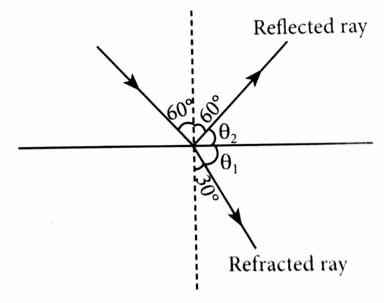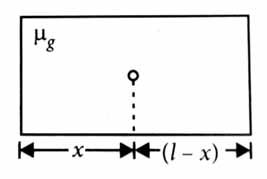Topic Question Set
Q 1
:
and are the electric permittivity and magnetic permeability of free space respectively. If the corresponding quantities of a medium are and respectively, the refractive index of the medium will nearly be [2023]
-
-
3
2
(2)
Q 2
:
A light ray falls on a glass surface of refractive index , at an angle 60°. The angle between the refracted and reflected rays would be [2022]
30°
60°
90°
120°
(3)

The refractive index of glass,
Angle of incidence =
Let be the angle of refraction.
Now, applying Snell's law
Let be the angle between reflected ray and refracted ray.
Hence, from the figure we can say that
Q 3
:
An air bubble in a glass slab with refractive index 1.5 (near normal incidence) is 5 cm deep when viewed from one surface and 3 cm deep when viewed from the opposite face. The thickness (in cm) of the slab is [2016]
8
10
12
16
(3)

Here
length of the slab
position of air bubble from one side
As per question, total apparent length of slab = 5 + 3

